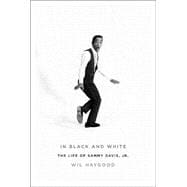
| Prologue: Yes He Can | 3 | (31) | |
| 1: Vaudeville Dreams | 34 | (23) | |
| 2: Long Shadows | 57 | (24) | |
| 3: The Kid in the Middle | 81 | (24) | |
| 4: And Sammy Shall Lead Them | 105 | (11) | |
| 5: White Sammy, Black Sammy | 116 | (35) | |
| 6: Through a Glass Eye Brightly | 151 | (54) | |
| 7: The Great White Sammy Way | 205 | (23) | |
| 8: The Wonder of It All | 228 | (24) | |
| 9: A Hitchcockian Affair | 252 | (21) | |
| 10: On to Catfish Row | 273 | (21) | |
| 11: The Sands of Las Vegas and Beyond | 294 | (23) | |
| 12: Sammy and Hilly | 317 | (15) | |
| 13: Golden | 332 | (25) | |
| 14: Fade to Black | 357 | (17) | |
| 15: Mirrors | 374 | (25) | |
| 16: Sammy and Tricky Dick | 399 | (40) | |
| 17: Ode to the Vaudevillian | 439 | (26) | |
| 18: The Ides of Time | 465 | (10) | |
| 19: The Final Curtain | 475 | (6) | |
| Epilogue: Mother of a Motherless Child | 481 | (6) | |
| Source Notes | 487 | (10) | |
| Selected Bibliography | 497 | (4) | |
| Acknowledgments | 501 | (2) | |
| Index | 503 |
The New copy of this book will include any supplemental materials advertised. Please check the title of the book to determine if it should include any access cards, study guides, lab manuals, CDs, etc.
The Used, Rental and eBook copies of this book are not guaranteed to include any supplemental materials. Typically, only the book itself is included. This is true even if the title states it includes any access cards, study guides, lab manuals, CDs, etc.
Excerpted from In Black and White: The Life of Sammy Davis, Jr. by Wil Haygood
All rights reserved by the original copyright owners. Excerpts are provided for display purposes only and may not be reproduced, reprinted or distributed without the written permission of the publisher.